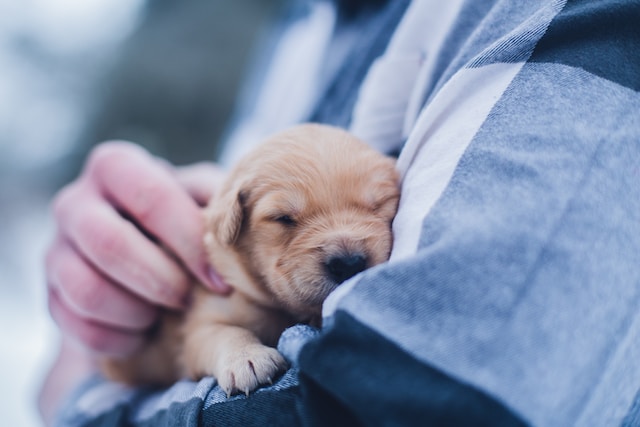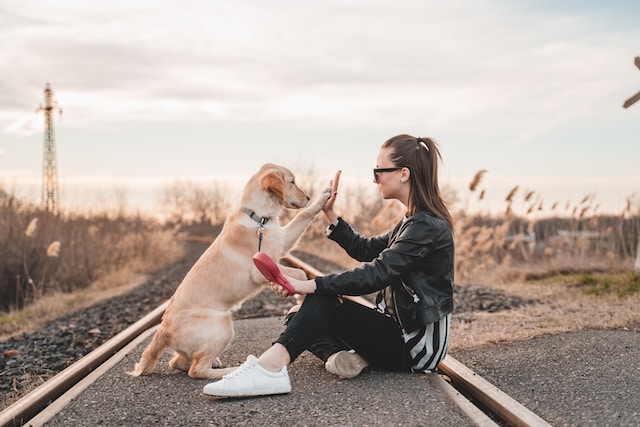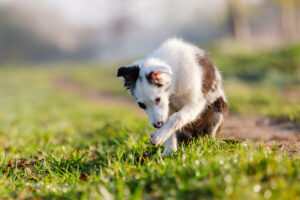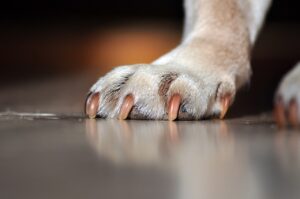Bonding with your dog is the goal of every pet owner, and most times, this isn’t a walk in the park. The 3 days, 3 weeks, 3 months rule helps you bond easily with your dog, and it helps your pet transition easily too.
This post covers everything you need to know about the 3-3-3 rule.
Why the 3-3-3 Rule?
The 3-3-3 rule provides guidelines for the first three days, three weeks, and three months after adopting your furry friend. It helps your new dog adapt to their new surroundings and integrate into your home.
It’s also instrumental in establishing a strong foundation for a happy, long-term bond with your family.
The 3-3-3 rule stresses the need for three things as a pet owner:
- patience
- consistency
- positive reinforcement during this adjustment period
Dogs thrive on routine and stability. This is why this rule encourages providing them the time and support they need to feel comfortable and build trust in their new home.

The First 3 Days, 3 Weeks, 3 Months
Here’s how you can use the 3-3-3 rule with your dog.
The First 3 Days With Your Dog
During the first three days after bringing your new dog into your home, it’s vital to provide them with the space and time they need to adjust to their unfamiliar surroundings.
Your canine companion may display some signs. But this shouldn’t be a cause for panic. These signs include:
- anxiety
- nervousness
- confusion as they encounter new sights, smells, and sounds
You need to understand that dogs have feelings too and during the first 3 days, some dogs might be cautious about:
- eating
- drinking
- engaging in play activities
This is what we usually call decompression.
To facilitate a smooth transition, set up a quiet and cozy area for your new dog. It should be complete with their bed, food, water, and toys.
It’s advisable to limit their interactions with other pets during this time. Also, you may want to reduce interactions with family members, and visitors to avoid overwhelming them.
Within the first three days, use short leash walks when taking your dog outside for bathroom breaks. Prioritize this over extended walks or park visits.
This allows your new furry family member to gradually explore and become familiar with their new environment.
The First 3 Weeks With Your Dog
Moving on to the first three weeks with your new dog, it’s time to gradually introduce them to your family members and other pets. Make sure to make their daily routines as consistent as possible during this period.
Positive reinforcement is key. Reward good behavior with any of the following:
- treats
- praise
- toys
This will help them learn to follow your commands.
Now is a good time to start exploring new environments with your dog. You should start considering going for walks in the neighborhood or visiting the park.
However, it’s important to be mindful of their comfort level and keep them on a leash until you’re confident they won’t run off.
The First 3 Months With Your Dog
As you approach the end of the initial three weeks, your dog should begin feeling comfortable in their new home and with your loved ones. Over the following three months, the focus remains on reinforcing positive behavior and gradually exposing them to new experiences.
Consider enrolling your dog in obedience classes or training sessions during this period. It aids in developing good habits and boosting their self-assurance.
This phase is also the right time to establish a consistent routine. Such as:
- exercise
- playtime
- training sessions
Practice patience, shower your new companion with love, and continue using positive reinforcement. By the end of the first three months, your dog should be fully integrated into your home and its daily routine. It’s worth noting that every dog is unique, and some may require more time to adjust.
By faithfully following the 3-3-3 rule, you’ll be laying the groundwork for a joyful, enduring bond. This approach also enables you to identify and address any potential behavioral issues early on.
In the end, you get to tackle any problem with your pet early. This helps you avoid larger concerns in the future.

5 Dog Bonding Activities
You can bond with your dog with these activities
Dog Games
Once your workday wraps up, it’s crucial to spend quality time with your furry friend. Engage in fun games like:
- fetch
- tug-of-war with their rope toy
- go for a refreshing walk or run
Dogs adore exploring new places, so consider varying your walking or running routes to introduce them to different scents and new surroundings.
It’s also a great idea to involve the whole family in these activities to strengthen your bond together.
Dog Tricks
Teaching your dog new tricks is another wonderful bonding activity. While it may seem like a task for humans, it’s actually mentally stimulating for dogs.
They take joy in pleasing you as their parents, and these training sessions can be a delightful way to deepen your connection with your furry companion.
Dog Sports
Some dogs find joy in taking part in various dog sports. There is a wide range of options available, including:
- agility
- disc dog
- flyball
- herding
With time, you will discover a sport that both you and your dog will enjoy doing together. It’s a constructive way to keep them active and maintain a healthy weight.
Even a trip to the dog park for a game of fetch with a ball can be an enjoyable activity for them.
Play Dates
Arranging playdates for your dog with other canine pals is essential for their socialization. It’s also an excellent opportunity to assess how well your dog responds to your commands. This interaction can serve as a test of your bond with your new pet.
As you may already know, having two dogs together can sometimes lead to mischief. In such situations, it’s important to correct your dog’s behavior. If they heed your commands, it indicates their respect for you, even in the company of other pets.
Dog Free Time
When you bring a new puppy into your home, there are chances that you may bombard them with new experiences. But, it can be a lot for them to take in all at once.
While building that special bond with your new furry friend, it’s equally important to provide them with their own space and some alone time. This helps them feel at ease and prevents the development of separation anxiety.
One excellent way to achieve this is by setting up a crate or playpen where your dog can relax independently. This should be away from household and family members’ distractions.
In this safe space, your dog will feel comfortable and secure while gaining independence. This will set the stage for them to grow into a well-adjusted adult dog.
Give Your Dog the Best Pet Insurance Today
While nurturing a strong bond with your pet is essential, you must also plan for potential vet expenses. An insurance plan can be a valuable tool in managing these costs.
However, with numerous options available, selecting the right pet insurance plan for your dog can be daunting.
At Truffle Paws, our mission is to assist you in making an informed choice when scouting for the best insurance plan for your beloved canine companion.
Begin your journey with us today, and let’s help you cover the financial responsibilities of dog ownership.







